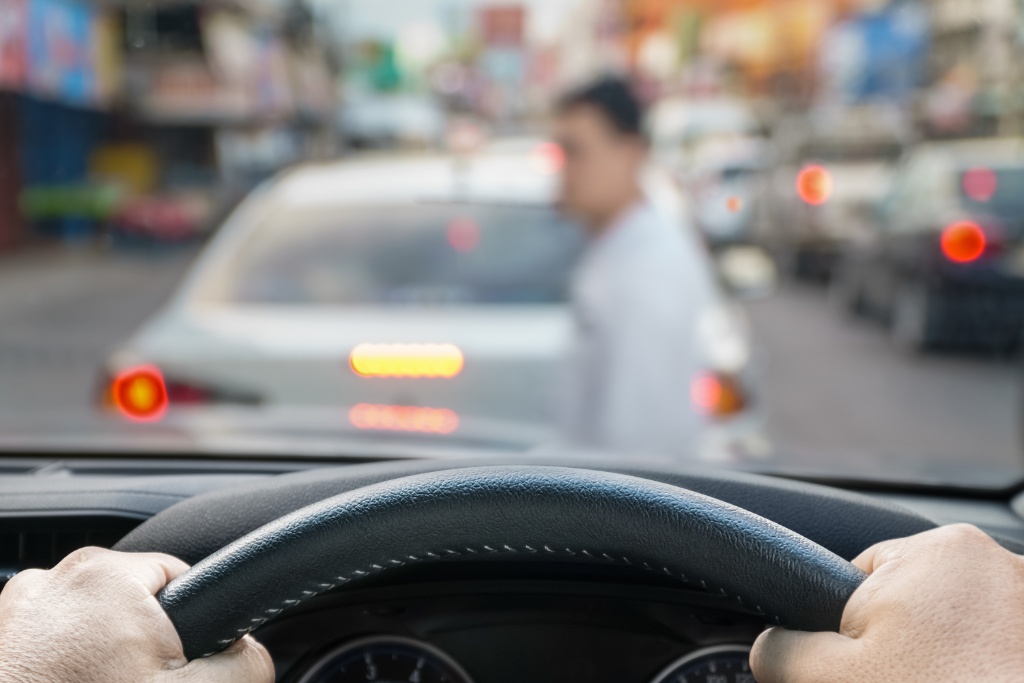March 8, 2018 | pedestrian accident Claims
How Does the Law Protect British Columbia Pedestrians?
Table of Contents
Important Notice: Our firm can only assist with pedestrian accident claims where no motor vehicle was involved. If a motor vehicle was involved in your pedestrian accident, we are only able to assist if the incident occurred before May 1st, 2021.
On average, around 1,600 bicyclists and 2,600 pedestrians are injured in automobile accidents in British Columbia every year. Such accidents are among the most dangerous, because there is so little protection around a pedestrian or bicyclist. Recognizing the increased risk that comes from mixing motor vehicles and foot traffic, British Columbia’s Motor Vehicle Act provides special rules for pedestrians and cyclists and those driving around them.
The Motor Vehicle Act, originally passed in 1957, establishes the law for all users of British Columbia roads, including cyclists, pedestrians, and drivers. The law generally provides that pedestrians have the right of way when crossing a street in crosswalks, but must generally yield to motor vehicle traffic otherwise.
The specifics of how the law regulates drivers when traveling near pedestrians, cyclists, and other vulnerable road users is changing. In response to changes in how British Columbians use the roads, proposals have been floated to amend the Motor Vehicle Act to offer greater protection for travelers on foot or bicycle.
Let’s take a closer look at how the law protects British Columbia pedestrians and how provincial policy may change to better protect all users of the roads.
Crosswalks and Pedestrian Right of Way
The basics of the Act regarding the rights of British Columbia pedestrians and drivers provide that generally a pedestrian has the right of way to cross streets at crosswalks. However, even when a pedestrian is in a crosswalk, he or she may not have the right of way to cross if an approaching vehicle is so close as to be impractical for the driver to yield the right of way.
Although crosswalks are usually marked at intersections, even where an intersection is unmarked, the Motor Vehicle Actprovides that a crosswalk is deemed to exist. When a vehicle slows or stops at a crosswalk to allow a pedestrian to cross the highway, a driver approaching from the rear must not overtake or pass the slowing or stopped vehicle.
When a pedestrian is on the road but not in a crosswalk, drivers must take care to avoid collisions with the pedestrian, give warning by sounding a vehicle’s horn when necessary, and take “proper” precaution if a child or someone confused or incapacitated is on the highway.
Keeping with the Times
Since the Motor Vehicle Act was passed in 1957, the nature of transportation has shifted dramatically throughout British Columbia. Distracted driving has recently become a dangerous problem for drivers, and Part 3.1 of the Motor Vehicle Actwas introduced in 2010 to fine and penalize drivers using electronic devices like cell phones while operating motor vehicles.
Cycling has also changed transportation across British Columbia as the fastest growing mode of transportation in metropolitan Vancouver, with about a quarter of British Columbians traveling by bicycle daily or weekly.
To address these changes, the provincial government is currently developing new policies to reduce motor vehicle-related injuries and fatalities throughout the province.
Part of proposed policy changes include amendments to the Motor Vehicle Act. The BC Road Safety Law Reform Group has proposed introducing a safer passing law, requiring motor vehicles to pass vulnerable users of the road, such as pedestrians, cyclists, or someone using a wheelchair or riding a horse, by a distance of at least 1.5 metres.
According to this proposal, a vehicle traveling in a multi-lane highway would need to change into the other lane to pass, especially improving road safety for cyclists.
Another proposal recommends reducing speed limits in residential areas to 30 km/h to improve safety. Studies suggest that these changes will improve safety for users of the road. For example, according to the British Columbia government, a pedestrian has a 90% chance of surviving a collision if the car is traveling 30 km/h.
How the Law Protects British Columbia Pedestrians
Pedestrians and bicyclists are among the most vulnerable users of British Columbia roads. Without the metal frame of an automobile around them, they are fully exposed to the force of a collision with an automobile. And, as relatively slow-moving users of the road, pedestrians and bicyclists are not well-situated to avoid collisions with faster-moving automobiles.
As more and more British Columbians take to the roads on foot or on bicycle, drivers must be increasingly mindful of their presence and understand how to drive safely near them. Changes to the Motor Vehicle Act may affect drivers’ rights and responsibilities when using the roads, but even without such changes, drivers must be careful not to injure other drivers, pedestrians, or bicyclists.
For British Columbians who have been injured in an automobile accident, whether as a driver, pedestrian, or cyclist, seeking legal counsel to understand and protect your rights is critical. Regardless of the mode by which you travel, Preszler Injury Lawyers can help you if you have been injured in an accident caused by another’s fault while on the road.
Written by Joseph Fearon
Personal Injury Lawyer
Managing partner Joseph Fearon’s work is concentrated on serious injury litigation. He has represented clients in brain injury cases, complex accident claims, matters involving contested liability, and more.
More pedestrian accident Topics
Here’s more information on pedestrian accident related topics that we think you might find helpful.

pedestrian accident
|
December 20, 2019
Do I Need a Lawyer if I Was Involved in a Pedestrian Accident?
Vancouver, Victoria, North Vancouver and White Rock are rated the most “walkable” cities in British Columbia for good reason. But when drivers fail to yield…

pedestrian accident
|
May 28, 2018
The hazards of walking and talking on your cell phone and how to prevent pedestrian accidents
Distracted driving is an issue making headlines throughout British Columbia in recent months as cell phone use while driving has become increasingly prevalent and dangerous…
Speak With Our
Legal Team for FREE
Find Out if You Have a Case in Under 5 Minutes
Speak to a Lawyer Now!
We’re here to help.
